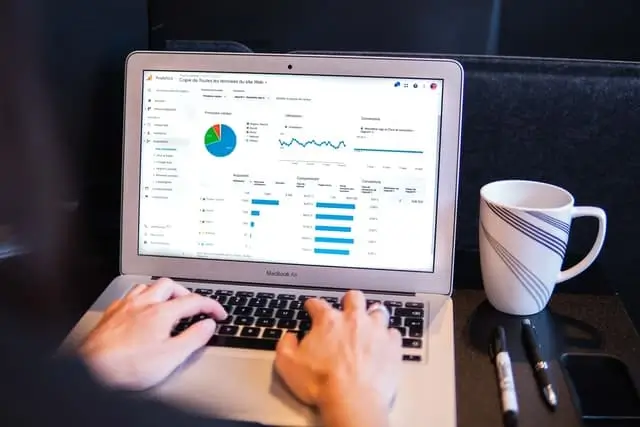Cyberattacks, accidental deletions, phishing attempts—there are numerous ways your Salesforce system data and metadata can become compromised.
Many companies make use of personalization, plug-ins, and more to tailor their Salesforce environment to their specific needs—and this can create security concerns.
Salesforce itself is very stable and secure. Vulnerabilities are introduced to the system when we start making alterations to fit our needs. These alterations are often essential. Plugins and applications increase the functionality of Salesforce in many ways.
This means salesforce data security concerns are an unavoidable aspect of using the platform. Knowing where these vulnerabilities lie is the best way to protect against them. You can’t put security measures in place if you aren’t aware of the threats.
But how do you know where to look? What aspects of a Salesforce environment can be exploited by cybercriminals? And what can be done to address these concerns?

Here are 6 things you can do today to assess the data security risks within your Salesforce environment:
Know What You Have to Protec
The first step to assessing your data security vulnerabilities is to identify the types of data in your system that could pose a danger should they become compromised. Obviously, you don’t want to expose or lose any data, but there are certain types of data that would create a much worse situation if they were compromised.
Protecting customer personally identifiable information (PII) such as account numbers, social security numbers, and driver’s license information needs to be a priority.
Any system information that is essential to functionality needs to be protected. This includes metadata.
Analyzing your data sets and arranging them into groups by their sensitivity will give you an idea of the scope of your vulnerabilities. And once you have this scope, you can begin to put together a plan to properly protect your Salesforce system data.
Identify Those with Access to This Information
Once you know your vulnerabilities, it’s time to begin identifying threats. Your mind probably immediately goes to cybercriminals when it comes to salesforce data security. And while this is certainly a large aspect of protecting your data, you also need to consider the actions of your teammates.
Team members can unknowingly pose a risk to your salesforce data security through accidental deletion, improper access methods, and simple mistakes.

95% of data breaches are the result of human error. Something as innocuous as leaving a screen unlocked as a team member walks away from a computer can pose a data security risk. The potential for a mistake to negatively affect your salesforce data security increases with each team member that has access to it.
Utilize permissions settings to make sure the only people that can access sensitive Salesforce data are those who have a direct need to do so. Overexposure happens when too many people have access to this information, and it increases the potential for a data security event.
Inspect Potential Entry Points for Weaknesses
Login screens are often the first place a cybercriminal will visit to gain access to your system. Analyzing these areas will give you an idea of how difficult it will be for these individuals to bypass your security system.
Strong team member passwords, two-factor authentication, obscured error messages, and a multi-level password reset protocol will bolster login screen security.
However, login screens are not the only potential entry point. Many cybercriminals use third party vendors as a backdoor to larger systems—such as with the Home Depot hack in 2014.
Fortifying these linked accounts will help keep bad actors out. You should also segment your system by putting barriers between various sections. This helps contain a data breach instead of allowing cybercriminals to move freely throughout your entire system after gaining access to a smaller area.
Evaluate Team Member Knowledge of Best Practices
We mentioned earlier how team members can pose an unwitting threat to your Salesforce system data. This is often due to simple mistakes and not malicious acts—although that is certainly a possibility as well.
Your team members’ ability to maintain proper practices and avoid common pitfalls will greatly impact your data security success.
Speak with your team members about considerations such as creating a secure password, recognizing phishing attempts, and avoiding malware. And if you find your team members lack knowledge in any of these areas, educate them.
Clear communication and thorough explanations of these factors—even if they seem basic—ensures that all your bases are covered. Simple mistakes can lead to great data loss. Your team members can contribute to your salesforce data security risks, but this is easily rectified through proper education.
Analyze Reporting Procedures
Documentation can be a great tool to assist you in recognizing potential data security vulnerabilities, and to identify breaches or overexposure before they become much larger problems.

Tracking login history and access logs increases accountability and provides immediate evidence if the system or data sets are viewed by unauthorized individuals.
Former employees or those who have been contacted by competitors can be tempted to steal or copy essential system data. Accountability is a great deterrent for team members who might be thinking about using the company’s Salesforce data in unscrupulous ways.
Automated reports ensure you aren’t missing anything when it comes to who is accessing your important data, when it happens, and where they are.
Review Backup Strategies
Preparing for a data loss event is an essential part of protecting your Salesforce system. There are a wide variety of potential causes for system loss—such as hardware failure or even a natural disaster—and you’ll never be completely guaranteed to avoid them.
Contemporary backups of your Salesforce system data are vital when it comes to a complete data security strategy.
If you have a backup system in place, revisit the settings. How often does it take snapshots of your system? What data is included in these backups? And how long will it take to restore the data should the initial sets become lost?
The ability to restore your information is an inextricable aspect of backing up your system data. AutoRABIT Vault Data Backup & Recovery provides everything you need to be assured your Salesforce data and metadata are there when you need it most.